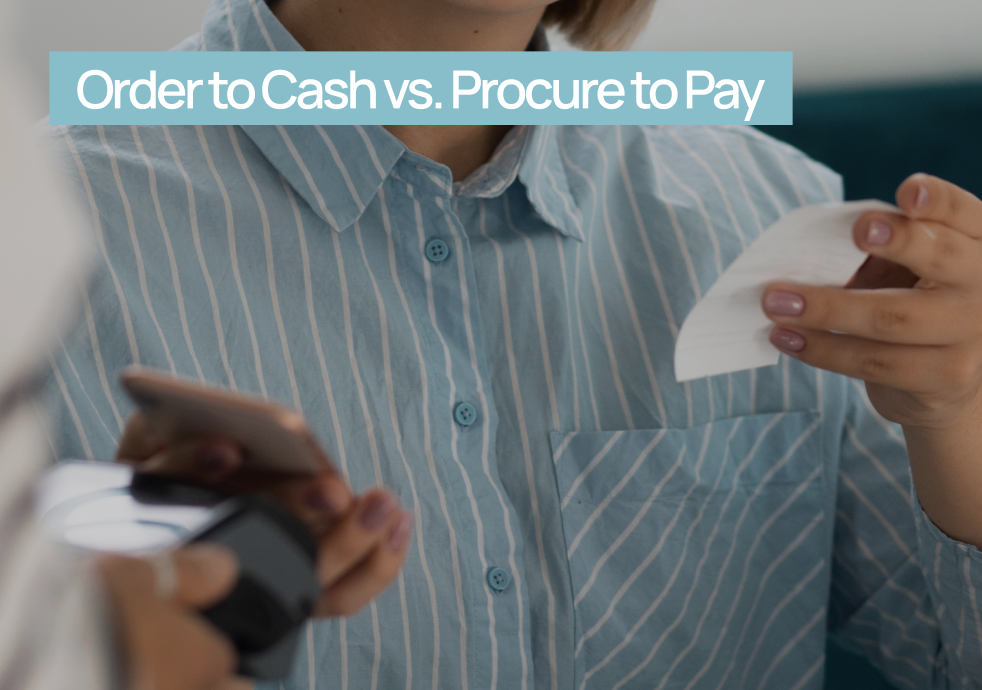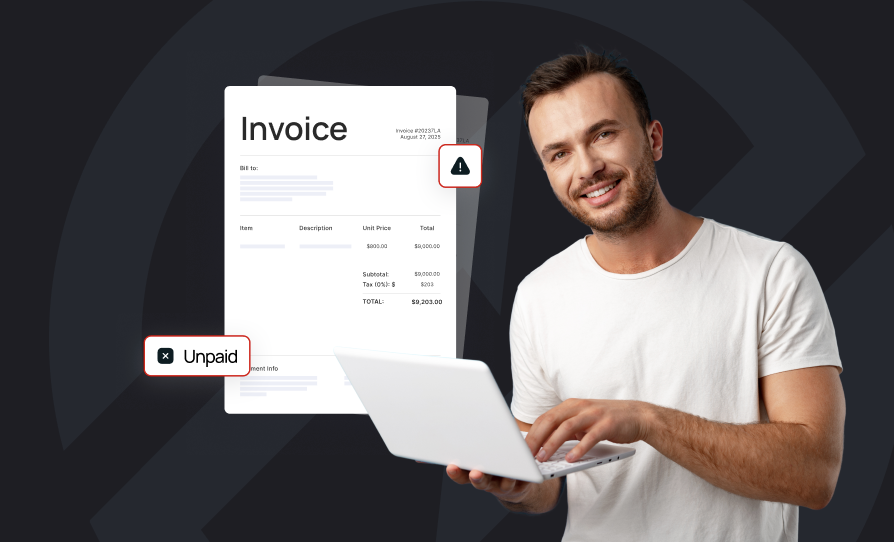Efficient business operations rely on how well companies manage their financial workflows. Two of the most crucial processes in this space are Order-to-Cash (O2C) and Procure-to-Pay (P2P).
Understanding their differences, benefits, and challenges can help organizations streamline operations, improve cash flow, and drive better decision-making.
What is Order-to-Cash?
Order-to-Cash is the process a business uses to fulfill customer orders and receive payment. It begins when a customer places an order and ends when the business collects the final payment.
This process involves multiple departments, including sales, customer service, fulfillment, and finance. A well-optimized O2C cycle ensures timely deliveries, accurate invoicing, and improved cash flow.
Key Components of the Order-to-Cash Process:
- Order Management: Receiving and validating the customer order.
- Credit Approval: Checking the customer’s creditworthiness.
- Fulfillment: Picking, packing, and shipping the product.
- Invoicing: Generating and sending the bill.
- Payment Collection: Receiving funds through the chosen payment method.
- Accounts Receivable Management: Tracking outstanding payments and follow-ups.
A strong O2C process enhances customer satisfaction and keeps revenue streams predictable and healthy.
What is Procure-to-Pay?
Procure-to-Pay refers to the process businesses use to obtain goods and services from suppliers and manage the related financial transactions.
This workflow starts with identifying needs and ends with the final payment to the supplier, encompassing procurement, approvals, and finance.
Key Components of the Procure-to-Pay Process:
- Requisitioning: Internal departments request the needed items or services.
- Purchasing: A purchase order (PO) is created and sent to the supplier.
- Receiving: Goods or services are delivered and inspected.
- Invoicing: Suppliers send invoices based on the PO.
- Payment: The business processes and completes the payment.
P2P is especially important for cost control, supplier management, and compliance.
Main Steps of the Procure-to-Pay Cycle
To ensure a smooth procurement and payment process, it’s important to follow a structured cycle. Here are the five main steps:
- Need Identification: Teams determine the materials or services required for operations or projects. This often starts with a purchase requisition.
- Purchase Order Creation: The procurement team selects a supplier and issues a PO based on internal approvals and budgets.
- Goods or Services Receipt: When the supplier delivers the order, the receiving team verifies the quantity and quality against the PO.
- Invoice Processing: The invoice matches the PO and delivery confirmation. Any discrepancies are flagged for resolution.
- Payment Authorization and Execution: After invoice approval, the finance team processes the payment within the agreed terms.
Each step builds accountability, prevents fraud, and ensures timely supplier payments.
Challenges of Order-to-Cash

Despite its importance, the Order-to-Cash process can face several operational hurdles.
Delays in Payment Collection
Late payments or disputed invoices can disrupt cash flow and affect forecasting. Without automation, tracking outstanding balances becomes tedious and error-prone.
Inefficient Order Fulfillment
Disorganized inventory, system silos, or communication gaps between departments can lead to delays or incorrect shipments, which directly impact customer satisfaction.
Inaccurate Invoicing
Manual data entry or system mismatches may result in errors that delay payments and damage customer relationships. An inaccurate invoice often leads to payment disputes or non-payment.
Benefits of Procure-to-Pay
Using a modern procure-to-pay software platform brings several advantages for businesses of all sizes.
Greater Spend Visibility
Real-time tracking of expenses and vendor contracts ensures informed decision-making and easier budget adherence.
Improved Compliance and Control
Automated workflows reduce the risk of fraud, support audit trails, and enforce policy compliance across all procurement activities.
Faster Procurement Cycles
Digitized approvals, purchase orders, and invoice matching drastically cut down cycle times and reduce administrative overhead.
Reduced Operational Costs
Automation reduces manual tasks, minimizes errors, and streamlines approvals, which together lead to noticeable cost savings.
Better Supplier Relationships
On-time payments and clear communication help build trust with suppliers, often leading to better pricing and priority service.
Best Practices of Procure-to-Pay
An effective Procure-to-Pay process doesn’t just rely on technology—it also depends on strong internal practices. By adopting key best practices, businesses can maximize efficiency, cut costs, and reduce risk.
Standardize Procurement Policies
Create clear, consistent policies that define who can buy what, from whom, and within what budget limits. Use templates and approval workflows to ensure every purchase follows the same process. This reduces maverick spending and boosts policy compliance.
Automate Where Possible
Use procure-to-pay software to automate purchase orders, invoice matching, and payment processing. Automation speeds up the cycle, eliminates manual errors, and frees up teams to focus on strategic work.
Maintain an Approved Supplier List
Regularly evaluate and maintain a list of reliable vendors. Choose suppliers based on performance, pricing, and compliance history. This helps reduce risk and strengthens procurement reliability.
Enforce Three-Way Matching
Ensure invoices are only paid when they match both the purchase order and the goods receipt. This three-way check prevents overpayments and fraud while maintaining strong financial control.
Monitor Key Metrics
Track metrics like purchase order cycle time, invoice accuracy rate, and on-time payments. Use dashboards to quickly spot issues and trends so you can take action before they affect your operations.
Streamline Your Procurement with Tradogram
Choosing the right P2P software can transform your procurement process from a manual burden to a strategic asset. Tradogram offers a flexible and intuitive platform that helps businesses manage purchasing, contracts, budgets, and supplier performance—all in one place.
Explore how Tradogram can simplify your Procure-to-Pay workflow and drive long-term efficiency.
.png)


.png)
.png)

.webp)

.png)










